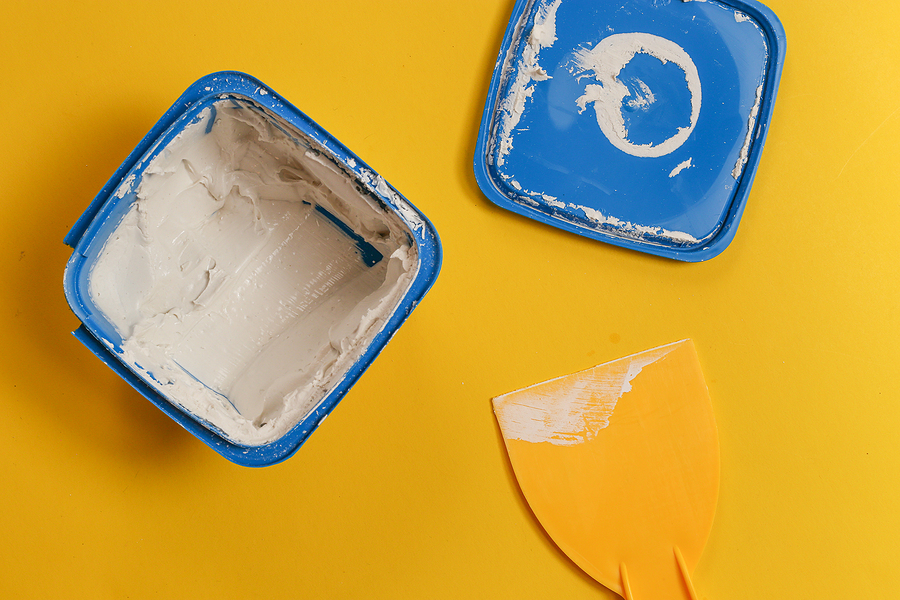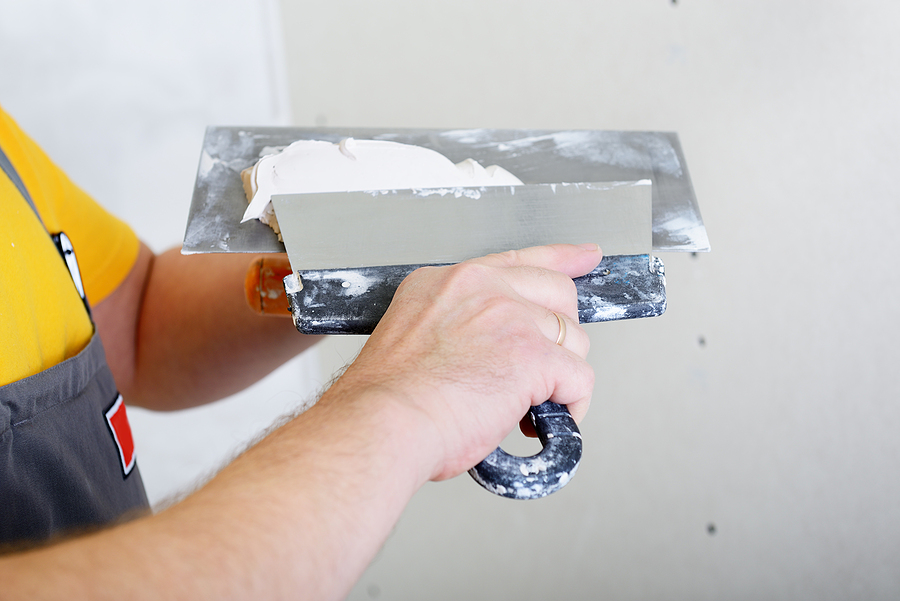In the world of home improvement, few tasks offer as much satisfaction as a perfectly smooth and freshly painted wall. Drywall, the unsung hero of modern interiors, provides the canvas upon which our homes and commercial spaces are built. However, like any other element of construction, drywall is not immune to wear and tear.
Whether you’re dealing with minor dents or major holes, understanding the drywall repair process can save you both time and money. This blog post is your ultimate guide to navigating the world of drywall repair, offering insights and practical steps for homeowners, property managers, and DIY enthusiasts alike.

Why Drywall is the Backbone of Modern Interiors
Drywall, also known as gypsum board or plasterboard, is a staple in modern construction due to its affordability, ease of installation, and versatility. It forms the walls and ceilings of our homes, providing a smooth surface for painting and decorating. Its importance cannot be overstated, as it contributes significantly to the aesthetic and functional aspects of any interior space.
Homes and commercial properties rely heavily on drywall to create partitions, cover structural elements, and improve acoustics. Without it, our living and working spaces would lack the polish and refinement we’ve come to expect. Yet, despite its strengths, drywall is susceptible to damage. Everyday activities, moisture exposure, and structural settling can all lead to dents, cracks, and holes. Understanding the causes of such damage is crucial for effective drywall maintenance and repair.
Common Culprits Behind Drywall Damage
Before embarking on the drywall repair process, it’s essential to identify the common causes of damage. Understanding these factors can help you prevent future issues and protect your walls from unnecessary wear and tear. One prevalent cause of drywall damage is accidental impact. Moving furniture, opening doors too forcefully, or even an energetic pet can result in dents and holes. These seemingly minor incidents can accumulate over time, leaving your walls less than pristine.
Moisture is another major enemy of drywall. Leaks, high humidity, and poor ventilation can lead to mold growth, warping, and deterioration of the material. Addressing the root cause of moisture issues is crucial to preventing further damage. Additionally, settling and structural shifts can cause cracks in drywall. This is especially common in new constructions as the building shifts and settles over time. Understanding these common culprits can guide your repair efforts and prevent future occurrences.
Your Step-by-Step Guide to Drywall Repair
Repairing drywall might seem daunting, but with the right approach and a bit of patience, it can become a manageable task. Here’s a comprehensive step-by-step guide to help you through the drywall repair process.
Assessing the Damage
Begin by thoroughly assessing the extent of the damage. Identify whether you’re dealing with a small dent, a medium-sized hole, or a large section that requires replacement. This assessment will determine the tools and materials you’ll need for the job. Small dents and wall holes can often be fixed with patching, while larger damages might require cutting out and replacing sections of drywall. Take note of any underlying issues, such as moisture or structural problems, that need addressing before proceeding.
Gathering the Necessary Tools and Materials
Once you’ve assessed the damage, gather the necessary tools and materials. For minor repairs, you’ll need patching compound, sandpaper, a putty knife, and paint that matches your wall color. For larger repairs, you’ll need a drywall saw, replacement drywall panels, joint tape, and screws. Having everything ready before you start will make the process smoother and more efficient.
Preparing the Area
Before you begin repairing, prepare the area by clearing the surrounding space and laying down protective coverings. Dust and debris can spread easily during the repair, so safeguarding your furniture and flooring is essential. If you’re repairing a wall near electrical outlets or switches, ensure that the power is turned off for safety.
Repairing Small and Large Holes
For small dents and holes, start by applying a thin layer of patching compound using a putty knife. Smooth it out and allow it to dry before sanding it down to create a seamless finish. For larger holes, cut out the damaged section and replace it with a new piece of drywall. Secure it with screws, apply joint tape, and use compound to blend the edges. Sand the area once the compound is dry for a uniform surface.
Sanding and Finishing
Sanding is a critical step in achieving a polished look. Use fine-grit sandpaper to gently smooth the patched area, ensuring that it’s flush with the surrounding wall. Be cautious not to over-sand, as this can damage the drywall surface further.
Painting and Final Touches
Once the repair is complete and the surface is smooth, it’s time to paint. Use a primer to ensure even paint application, then apply a coat of paint that matches your existing wall color. Feather the edges to blend the new paint seamlessly into the old. Stand back and admire your handiwork—a wall restored to its former glory.
Tips for DIY Drywall Repairs
While the drywall repair process can be tackled by anyone, a few tips can enhance your success. First, take your time. Rushing through the repair can lead to mistakes and a less-than-perfect finish. Patience is key to achieving a professional-looking result. Practice makes perfect. If you’re new to drywall repair, consider practicing on a scrap piece of drywall before tackling visible sections. This will help you refine your technique and build confidence.
Don’t hesitate to seek guidance. Online tutorials and home improvement resources can provide valuable insights and tips from experienced DIYers. Learning from others’ experiences can save you time and frustration.
Knowing When to Call a Professional
While many drywall repairs can be handled independently, there are situations where calling a professional is the best choice. Extensive damage, underlying issues like mold, or lack of experience can lead to more significant problems if not addressed correctly. Professionals bring expertise and specialized tools to the table, ensuring a smooth and long-lasting repair. If you’re unsure about tackling a particular repair, reaching out to a professional can save you time and headaches.
Wrapping Up
In conclusion, understanding and mastering the drywall repair process is a valuable skill for homeowners, property managers, and DIY enthusiasts. Regular maintenance and timely repairs not only enhance the aesthetic appeal of your spaces but also contribute to the overall integrity of your property. By addressing common causes of damage and following a systematic repair process, you can keep your walls looking pristine and well-maintained.
Maintaining your drywall is a proactive step in preserving the beauty and value of your home. Don’t hesitate to take action when damage occurs, and remember that seeking professional help is always an option.
If you’re ready to tackle your next drywall repair project or need assistance with more extensive repairs, our team of experts is here to help. Contact Drywall by Renso at 317-269-7319 for professional drywall repair service in Indianapolis Indiana. We serve residential and commercial clients all throughout the central part of the state.
Related Posts:
The Real Cost of Drywall Repair: Insights for Every Budget
Drywall Problems Decoded: A Guide to Drywall Repair and Maintenance
Basic Toolbox for Drywall Repair

